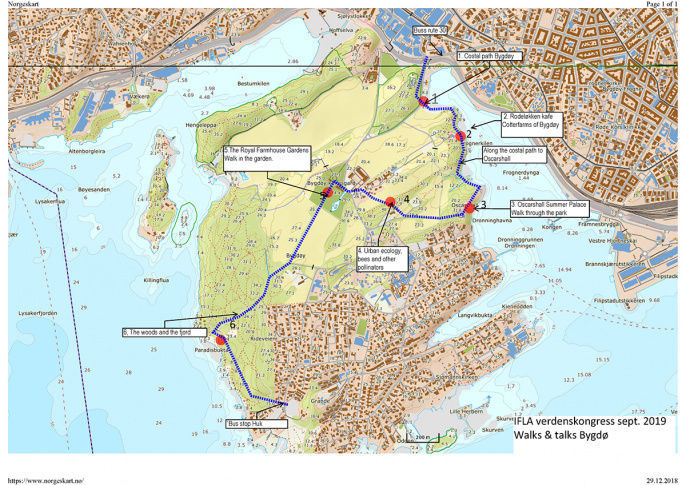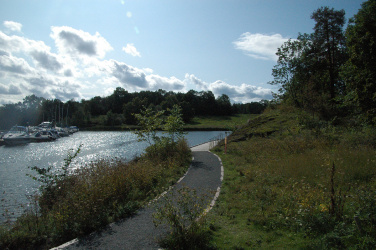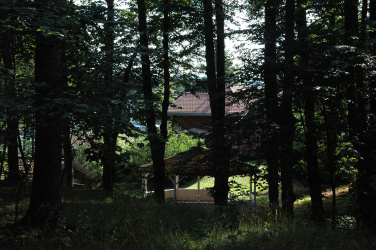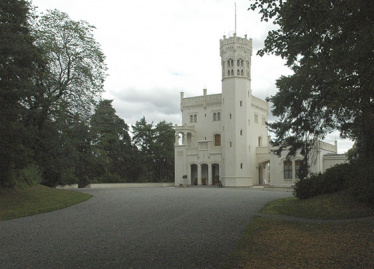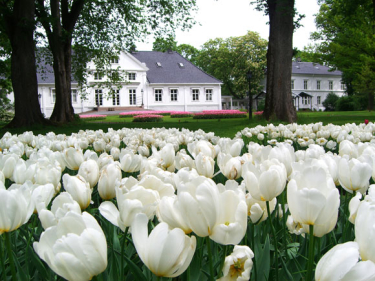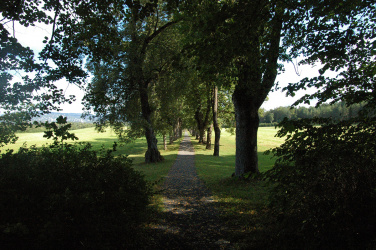Forskjell mellom versjoner av «Walks+Talks: Bygdøy Peninsula»
m (Astrid flyttet siden Walks+Talks: Bygdøy til Walks+Talks: Bygdøy Peninsula) |
|||
| (15 mellomliggende revisjoner av samme bruker vises ikke) | |||
| Linje 1: | Linje 1: | ||
| + | [[Fil:Bygdoy Peninsula.jpg|miniatyr|686x686pk]] | ||
| − | + | = Bygdøy peninsula = | |
| − | + | {{#coordinates:59.916442|10.685305|name=Bygdøy peninsula}} | |
| + | Bygdøy is a large, green peninsula with a rich history as a recreation site, close to central parts of Oslo. Bygdøy was one of Oslo's first areas that was secured for the recreational purposes. The peninsula has been a "recreational landscape" for the city's population Bygdøy today is a very important area for Oslo's population. Also containing important museums presenting the cultural heritage of Norway, it is a part of Oslo giving possibilities to experience both historic and todays landscape. | ||
| − | + | It has a royal manor and a baroque/romatic garden dating from the mid-18th Century. A public park was established here in 1837, with restaurants, follies, viewpoints, a few monuments and beaches and numerous paths for strolling. Bygdøy is also the location of the National Cultural Heritage Museum and the Viking Ship Museum. Recently the Bygdøy Public Park was protected by the Directorate for Cultural Heritage. | |
| − | + | The tour of Bygdøy will show the historical layers and some of the many accounts of Norway’s cultural history with footprints at Bygdøy and take you from the royal summer sites to today's active recreation areas. The walk will show the facilitation of the unique landscape qualities to meet today’s use without damaging the landscape. We will visit the private gardens at the Royal family’s summer residence Bygdøy kongsgård. | |
| + | ----[[Fil:Bygdøy costal path.jpg|miniatyr|Foto: IFLA 2019|376x376pk]] | ||
| − | Bygdøy | + | = Costal path Bygdøy = |
| − | + | ---- | |
| − | + | [[Fil:Rodeløkken cafe.jpg|miniatyr|376x376pk]] | |
| − | + | = Rohdeløkken café = | |
| + | {{#coordinates:59.9140171|10.6906006|name=Rohdeløkken café}} | ||
| + | ---- | ||
| + | [[Fil:Oscars hall.jpg|miniatyr|Oscars hall. Foto: IFLA 2019|374x374pk]] | ||
| − | + | = Oscarshall = | |
| + | Oscarshall was built as a summer palace by King Oscar I and Queen Josephine. Information about the garden and the building | ||
| + | {{#coordinates:59.9094245|10.69314|name=Oscarshall}} | ||
| − | + | ---- | |
| − | + | = Walk from Oscarshall to Bygdø kongsgård = | |
| + | ---- | ||
| + | |||
| + | [[Fil:Bygdø Kongsgård.jpg|miniatyr|375x375pk|Foto: IFLA 2019]] | ||
| + | |||
| + | = The Royal farmhouse Gardens = | ||
| + | {{#coordinates:59.911572|10.680757|name=The Royal farmhouse Gardens}} | ||
| + | The development of the garden reflects the history of Norwegian landscape gardening from the early 18th century to the first decades of the 20th. The garden layout seen today is more or less like it was designed from 1905 onwards by Queen Maud at Bygdøy kongsgård according to English garden principles. The restauration 2004 -08 was based on this design using modern principles for the use of vegetation such as perennials including recreation of perennial borders and a rockery. It is a private garden for the Royal family, not open to the public. For this reason, photography is not allowed. We are leaving the garden through the alley to the south. | ||
| − | |||
---- | ---- | ||
| − | + | = The Woods and the Fjord - Paradisbukta = | |
| − | + | {{#coordinates:59.901954|10.665766|name=The Woods and the Fjord - Paradisbukta}} | |
| − | + | [[Fil:Bygdøywalk.jpg|miniatyr|376x376pk|Foto: IFLA 2019]] | |
| − | + | The landscape at the west of Bygdøy is an important recreational landscape. During the walk information about principles of maintenance of the forested areas and the costal landscape will be given | |
| − | |||
---- | ---- | ||
| − | + | [[Fil:Common ground.jpg|miniatyr|539x539px]] | |
| − | + | '''IFLA World Congress 2019 will take a closer look at urban transformation, green mobility, healthy and beautiful landscapes and community participation. During three days in Oslo, we aim to inspire, challenge and intrigue you. We want you to share and reflect on the knowledge that is developed, presented and discussed.''' | |
| − | |||
| − | + | '''Join us in moving one step further to understand and protect our COMMON GROUND.''' | |
| − | + | {{Walks+Talks}} | |
| − | {{ | ||
| − | |||
[[Kategori:IFLA 2019]] | [[Kategori:IFLA 2019]] | ||
Nåværende revisjon fra 17. sep. 2019 kl. 11:23
Bygdøy peninsula
Bygdøy is a large, green peninsula with a rich history as a recreation site, close to central parts of Oslo. Bygdøy was one of Oslo's first areas that was secured for the recreational purposes. The peninsula has been a "recreational landscape" for the city's population Bygdøy today is a very important area for Oslo's population. Also containing important museums presenting the cultural heritage of Norway, it is a part of Oslo giving possibilities to experience both historic and todays landscape.
It has a royal manor and a baroque/romatic garden dating from the mid-18th Century. A public park was established here in 1837, with restaurants, follies, viewpoints, a few monuments and beaches and numerous paths for strolling. Bygdøy is also the location of the National Cultural Heritage Museum and the Viking Ship Museum. Recently the Bygdøy Public Park was protected by the Directorate for Cultural Heritage.
The tour of Bygdøy will show the historical layers and some of the many accounts of Norway’s cultural history with footprints at Bygdøy and take you from the royal summer sites to today's active recreation areas. The walk will show the facilitation of the unique landscape qualities to meet today’s use without damaging the landscape. We will visit the private gardens at the Royal family’s summer residence Bygdøy kongsgård.
Costal path Bygdøy
Rohdeløkken café
Oscarshall
Oscarshall was built as a summer palace by King Oscar I and Queen Josephine. Information about the garden and the building
Walk from Oscarshall to Bygdø kongsgård
The Royal farmhouse Gardens
The development of the garden reflects the history of Norwegian landscape gardening from the early 18th century to the first decades of the 20th. The garden layout seen today is more or less like it was designed from 1905 onwards by Queen Maud at Bygdøy kongsgård according to English garden principles. The restauration 2004 -08 was based on this design using modern principles for the use of vegetation such as perennials including recreation of perennial borders and a rockery. It is a private garden for the Royal family, not open to the public. For this reason, photography is not allowed. We are leaving the garden through the alley to the south.
The Woods and the Fjord - Paradisbukta
The landscape at the west of Bygdøy is an important recreational landscape. During the walk information about principles of maintenance of the forested areas and the costal landscape will be given
IFLA World Congress 2019 will take a closer look at urban transformation, green mobility, healthy and beautiful landscapes and community participation. During three days in Oslo, we aim to inspire, challenge and intrigue you. We want you to share and reflect on the knowledge that is developed, presented and discussed.
Join us in moving one step further to understand and protect our COMMON GROUND.
This article is part of IFLA Common Grounds: Walk+Talk.
You can view all Walks+Talks tours here

